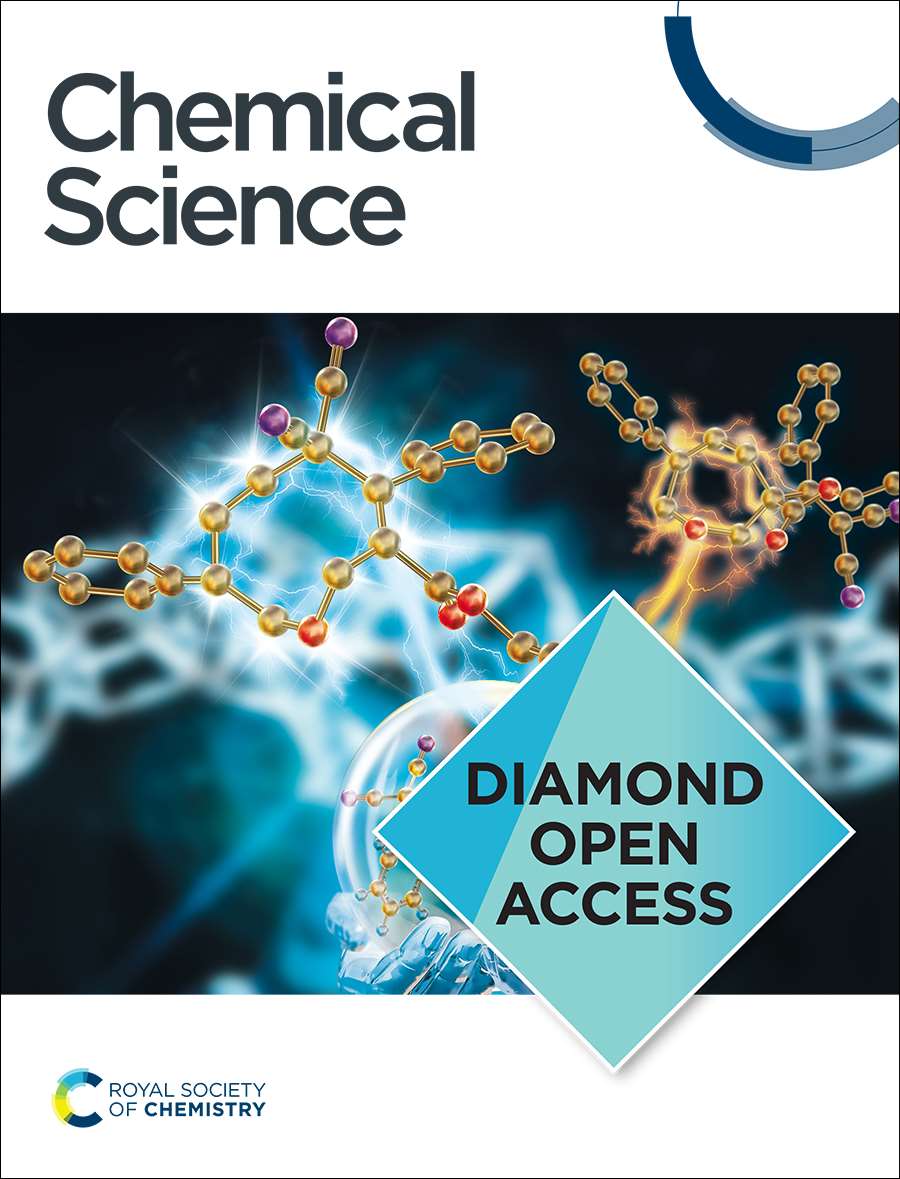Amino-Induced Cleavage of Electron-Communicating S-Bridge to Unlock Mixed-Valence Copper for Potent Oxidase-like Catalysis and Selective Sensing
IF 7.6
1区 化学
Q1 CHEMISTRY, MULTIDISCIPLINARY
引用次数: 0
Abstract
Transition metal sites with mixed valence often coexisted in diverse catalysis, yet their precise roles remained elusive. Taking a thiadiazole-coordinated Cu nanozyme system for example, we developed ligand side-group engineering to modulate adjacent dicopper sites with different mixed Cu1+/Cu2+ states. Amino functionalization of ligand induced the cleavage of electron-communicating S-bridge connecting adjacent dicopper centers to precisely manipulate the ratio of mixed Cu1+/Cu2+ sites. Such a tailored mixed-valence composition accelerated the preferential and selective activation of O2 to O2•− through the synergistical mechanism of Cu2+-dominated adsorption of O2 and Cu1+-controlled electron transfer in the initial step of catalysis. This targeted pathway boosted the oxidase-mimicking activity of the mixed-valence nanozyme by nearly 85-fold compared to its counterpart with the adjacent S-bridged Cu centers. The outstanding oxidase-like activity, coupled with the unique affinity of mixed Cu1+/Cu2+ sites for phosphorus, further enabled highly selective and sensitive sensing of cytotoxic tris(2-carboxyethyl)phosphine with a 0.96 ppm detection limit via the complexation-dominated activity inhibition mechanism. This fundamental insight into mixed-valence synergy of metal sites provided a new perspective for designing efficient catalysts for various catalysis, sensing and beyond.氨基诱导的电子通信s桥裂解解锁混合价铜的有效氧化酶样催化和选择性传感
混合价过渡金属位在多种催化中经常共存,但它们的确切作用仍不清楚。以噻二唑配位铜纳米酶系统为例,我们开发了配体侧基工程来调节具有不同Cu1+/Cu2+混合状态的相邻diccopper位点。配体的氨基功能化诱导了连接相邻二铜中心的电子通信s桥的断裂,从而精确地控制了混合Cu1+/Cu2+位点的比例。这种定制的混合价组合通过Cu2+主导的O2吸附和Cu1+控制的催化初始电子转移的协同机制,加速了O2对O2•−的优先和选择性活化。与相邻的s桥铜中心相比,该靶向途径将混合价纳米酶的氧化酶模拟活性提高了近85倍。出色的氧化酶样活性,加上混合Cu1+/Cu2+位点对磷的独特亲和力,进一步通过络合主导的活性抑制机制,实现了对细胞毒性三(2-羧乙基)膦的高选择性和高灵敏度检测,检测限为0.96 ppm。这种对金属位点混合价协同作用的基本认识为设计各种催化、传感等领域的高效催化剂提供了新的视角。
本文章由计算机程序翻译,如有差异,请以英文原文为准。
求助全文
约1分钟内获得全文
求助全文
来源期刊

Chemical Science
CHEMISTRY, MULTIDISCIPLINARY-
CiteScore
14.40
自引率
4.80%
发文量
1352
审稿时长
2.1 months
期刊介绍:
Chemical Science is a journal that encompasses various disciplines within the chemical sciences. Its scope includes publishing ground-breaking research with significant implications for its respective field, as well as appealing to a wider audience in related areas. To be considered for publication, articles must showcase innovative and original advances in their field of study and be presented in a manner that is understandable to scientists from diverse backgrounds. However, the journal generally does not publish highly specialized research.
 求助内容:
求助内容: 应助结果提醒方式:
应助结果提醒方式:


